Canals, Caminos & Culture
Our driver arrives at Casa Sarah at 8:30. Before heading off, we have one last coffee with Sarah's builder, Martin, then we're off. We arrive at Faro bus terminal at 9:15 with plenty of time to find our bus and grab a coffee before we go. The bus has its own Wi-Fi; we connect, and we are on our way to Spain. Within an hour, we are crossing the Guardiana River, and suddenly we are in Spain. There is no announcement, no "welcome to España," nothing. However, the bus Wi-Fi disconnects, and it takes about 10 minutes before our respective European SIM cards kick in, but here we are, suddenly in Spain.
We arrive at the bus station around 2 p.m., grab a taxi, head to our Airbnb, unpack, then step out into the old town of Seville. The holiday is over. That is, the "holiday within the holiday" is over. In Seville, we hit the ground running and go hard. We find a great little tapas bar down the end of the road and have some lunch with cerveza. After lunch, we walk to the train station to book our final tickets for our adventure: Seville to Toledo, then Toledo to Madrid. Once sorted, it’s back into the old town to meet
Chris Maher
23 chapters
20 Aug 2024
Spain: Hola Amigos
November 02, 2024
|
Saville
Our driver arrives at Casa Sarah at 8:30. Before heading off, we have one last coffee with Sarah's builder, Martin, then we're off. We arrive at Faro bus terminal at 9:15 with plenty of time to find our bus and grab a coffee before we go. The bus has its own Wi-Fi; we connect, and we are on our way to Spain. Within an hour, we are crossing the Guardiana River, and suddenly we are in Spain. There is no announcement, no "welcome to España," nothing. However, the bus Wi-Fi disconnects, and it takes about 10 minutes before our respective European SIM cards kick in, but here we are, suddenly in Spain.
We arrive at the bus station around 2 p.m., grab a taxi, head to our Airbnb, unpack, then step out into the old town of Seville. The holiday is over. That is, the "holiday within the holiday" is over. In Seville, we hit the ground running and go hard. We find a great little tapas bar down the end of the road and have some lunch with cerveza. After lunch, we walk to the train station to book our final tickets for our adventure: Seville to Toledo, then Toledo to Madrid. Once sorted, it’s back into the old town to meet
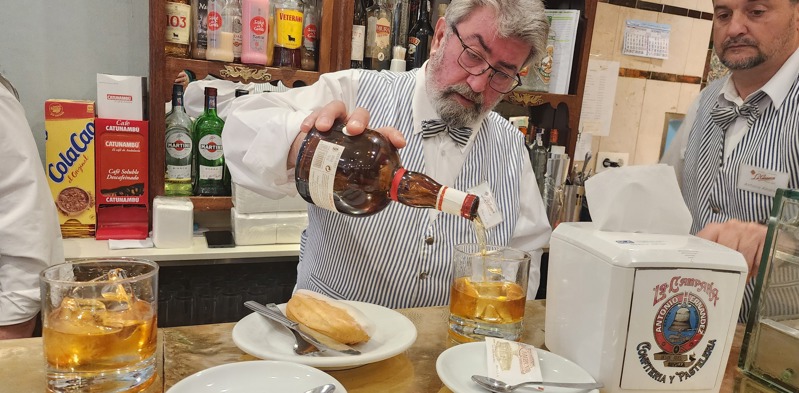
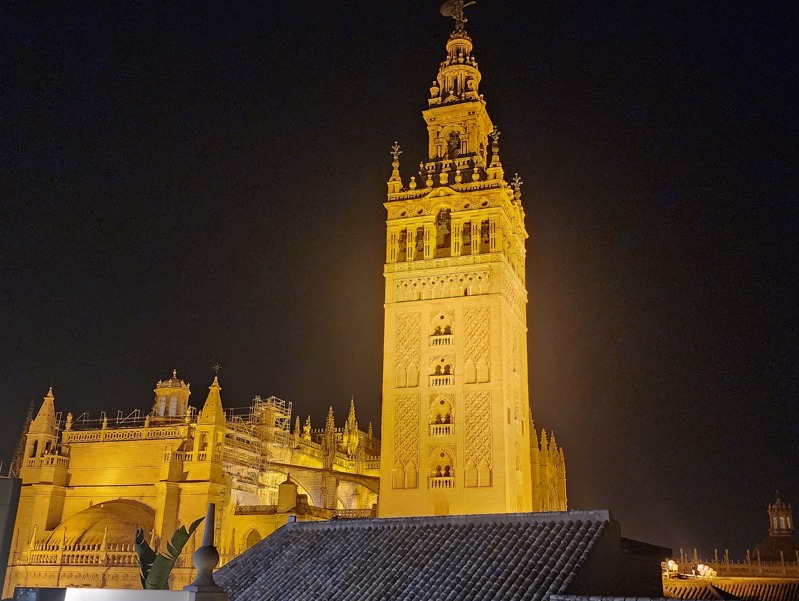
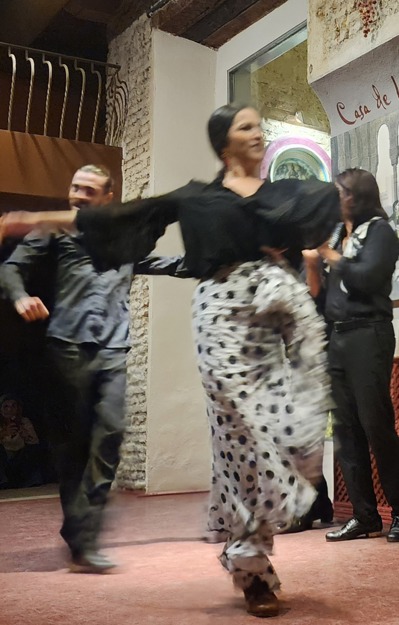

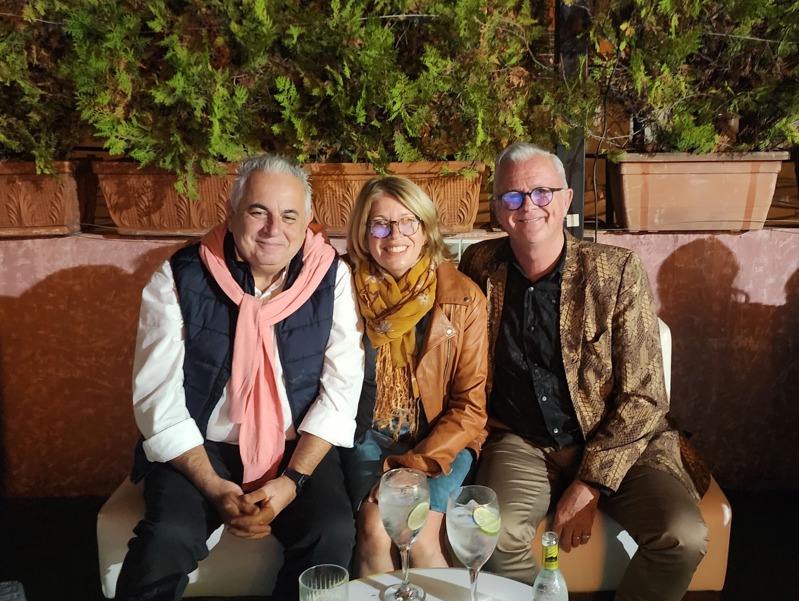

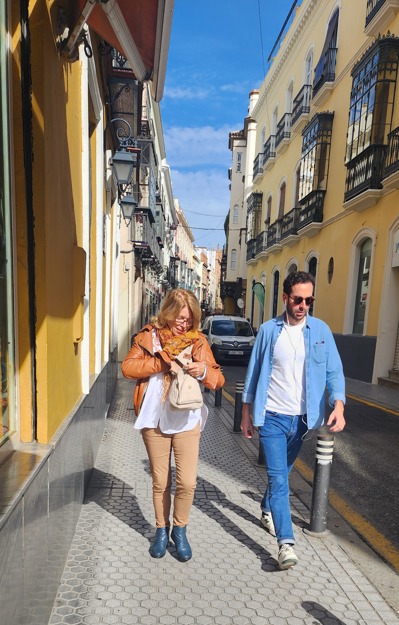
Manuel, the President of Skal Seville, at the Hotel Dona Maria, where he is the GM. We've agreed to meet at 7 pm, and Manuel has reserved a table for us up on the roof terrace of his hotel, which has the most amazing view of the Moorish tower of La Giralda under light. Manuel generously shouts us several rounds of drinks, and we finish with shots of Bruni Gin on ice, "no tonica." Manuel gives us several recommendations for our stay, which we duly note.
We leave the Dona Maria around 8:30 p.m. after several rounds of gin and head to Casa de la Memoria, where we have tickets for a 9 p.m. flamenco show. The theatre is rather small, with a capacity of maybe 120 people tops. We have front-row seats (there are only two rows) and are treated to the most intimate and passionate flamenco performance, raw emotion and cultural pride pouring out of each performer. Dancers and musicians finish each set in sync on a single sharp beat, with dancers contorting their bodies to the Fibonacci sequence.
After flamenco, we head to one of Manuel's recommendations, Casa la Viuda. It's now close to 11, and the streets are bursting with people. We arrive at Casa la Viuda, have a short wait for a table, and are seated at a table on the street, watching the throb of Sevillian life pass by. We order a few things off the menu, but something gets lost in translation as the waiter just keeps bringing us dishes. Eventually, we have to ask him to stop bringing food as we can eat no more. We are amazed to see so many families with young children out at restaurants past 11 p.m. We arrive back at our Airbnb sometime after midnight. The holiday within our holiday is over.
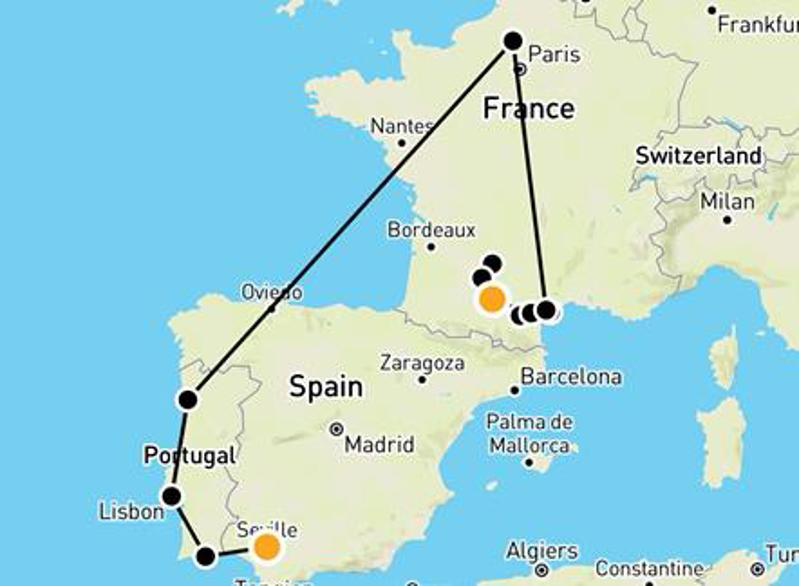
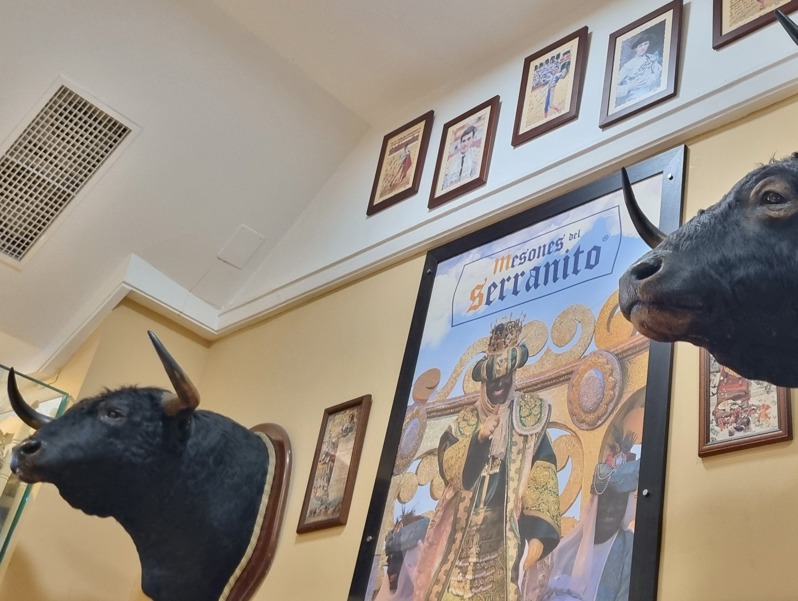
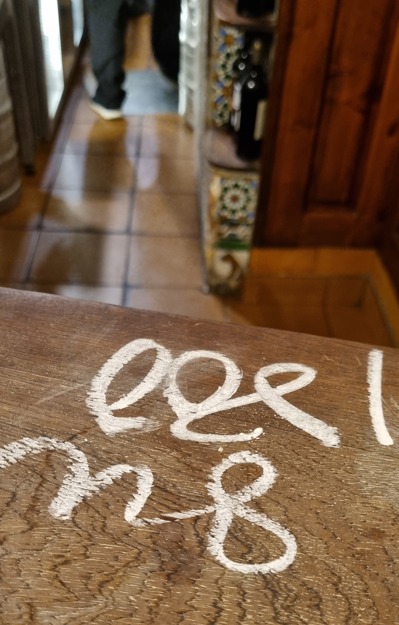


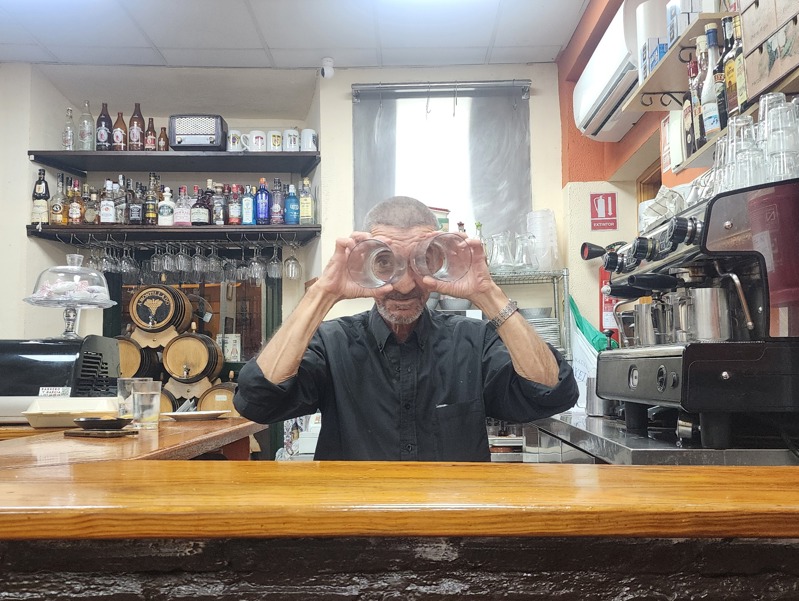
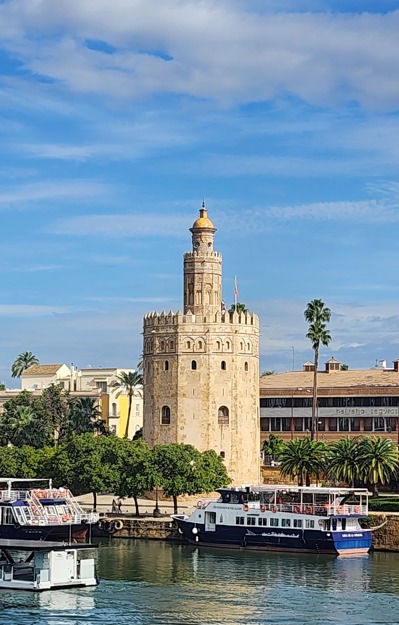
It's a slow start to our second day in Seville, but once we are out of the Airbnb around 9:30, it's a full-on day. We take breakfast at one of the host’s recommendations, then take a slow stroll toward the Triana district, exploring laneways and mis-turns as we go. Seville is an amazing mix of history and modernity. It has built form stretching back to the Roman Empire alongside a giant modern abstract structure in the center of town known as "the Mushroom." Triana is just across the bridge, and we arrive at our recommended restaurant at 1 p.m. It's right on the Canal Sevilla-Bonanza; we're on the third floor with a remarkable view. Food and service are exceptional, and we try a croquette with whiskey sauce. The
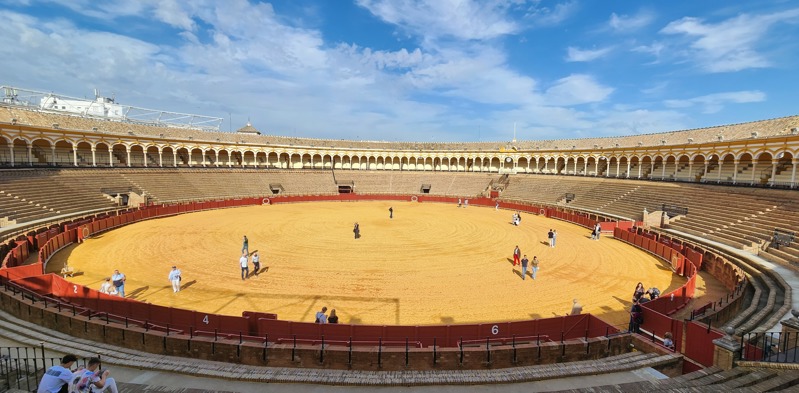

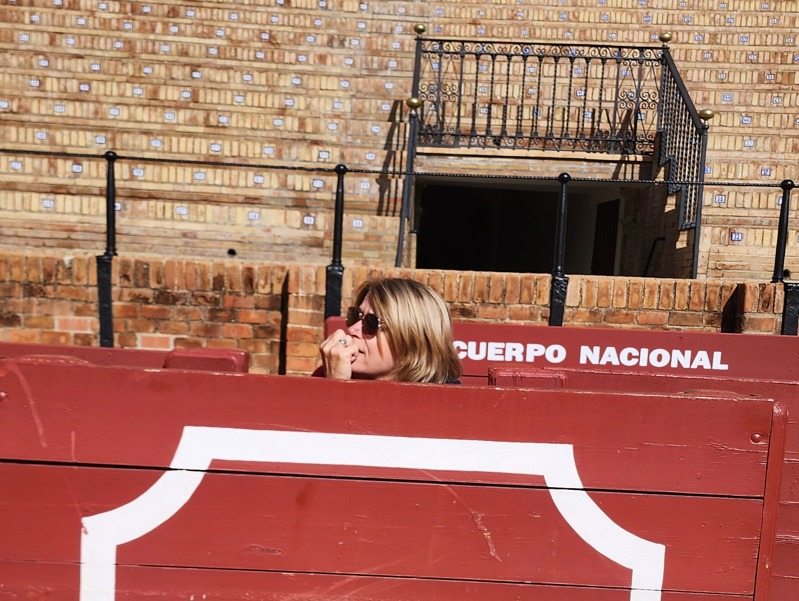
croquette is served with a little plastic syringe stuck in the side, so that you squeeze it to insert the whiskey sauce. After lunch, it's a slow meander, stopping at the odd bar along the way. We get a quick rest before heading back out for a city walking tour with White Umbrella. We manage to get to the meeting point just before the designated meet time of 5 p.m. to find the specific start location within the Plaza de España. We find our guide Abel and wait for all the guests to arrive. All up, there are about 12 people in our group. The tour spans several kilometers and 3 hours. We get a condensed but thorough lesson in Spanish history, which is told by referencing significant buildings and landmarks. Seville has a history stretching back beyond the Roman Empire. We learn of the Moors and their impact on architecture and culture and the Christians with their crusades against the Moors. One of the most interesting stops is outside a very stately-looking building, several stories high and with a large defensive moat. "Who can guess what this building was?" asks Abel with inexact English. "A palace," I offer. "No." "The mint," someone else suggests. "No." When we are all out of guesses, Abel reveals it was a tobacco factory, tobacco being a very valuable commodity of its time.
Originally, men worked here manipulating the giant grinding stones that turned the leaves into snuff. Then, when smoking became the preferred way to consume tobacco, the workforce changed to women, as their smaller fingers were more adept at rolling cigarettes. The iconic flamenco dress with its layers of ruffles has its origins in the uniforms of the gypsy women working in this factory. Originally, those ruffles were individual pockets to store the cigarettes as the women rolled them. Carmen, from the Bizet opera, was a gypsy woman working in this factory. It is now a university campus. Abel encourages us all to return the next day to walk through, as it's open to the public.
The tour concludes around 8 p.m. at the Plaza de Toros, Spain's oldest still-operating bull ring. We've learned a lot about Seville, met some interesting people, and now head back through the city, stopping at several tapas bars as we go. The first is one of Abel's recommendations close to the Plaza de Toros, but then we make our way to El Rinconcillo, Spain's oldest bar, which began in the 17th century. As you order your tapas and drinks, the tally is written in chalk on the bar; once you are finished and pay, the tally is wiped off and ready for the next customer.
Our final day in Seville is no less taxing. We head back to further explore all the sites pointed out by Abel on tour. Inside, the tobacco factory is just as incredible as Abel suggested it would be, with its ornate staircases. We take another look at the cathedral, which, among other things, houses 200 grams of the remains of Christopher Columbus. Next is a visit inside the Plaza de Toros; thankfully, there is no bullfighting in progress. One of the most interesting things to see among the pens for bulls and stables for horses is the matador's altar, where they would stop to pray on their way to fight the bull. On our way back through the city, we stop at a café specializing in coffee and pastries for an espresso and something sweet, followed by Grand Marnier on ice, which, like all liqueurs and spirits, is simply free-poured into the glass. They are generous shots.
We spend our final night in Seville moving between a jazz bar, a small traditional tapas bar, and a bar with an open mic night. It's been a hectic few days in which we clocked up 20 to 30 kilometers, had a crash course in Sevillian history, ate and drank, and got less sleep than we should have.
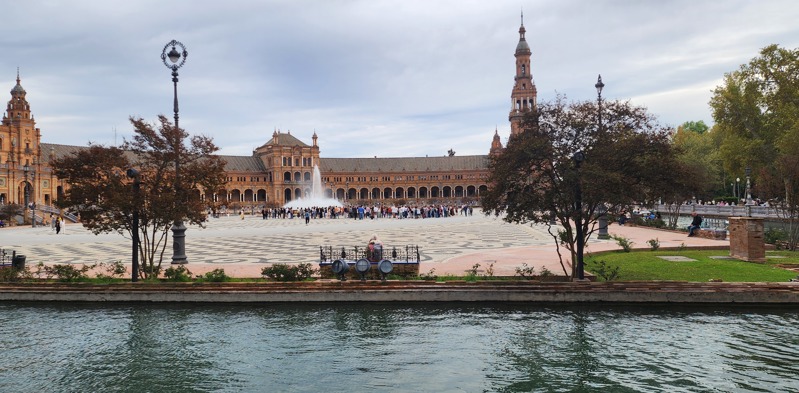
1.
Swept out of Broome
2.
To Toulouse
3.
Two Let Loose in Toulouse
4.
Cahors Calls: The Pilgrams Answer
5.
Le Puy Camino: Pilgrims Depart
6.
Marnhac to Montcuq: The Long Walk
7.
Montcuq to Lauzerte: Hitting our Stride
8.
Lauzerte to Durfort-Lacapelette: The Penultimate Leg
9.
Malbec in Moissac: The Tradition Continues
10.
Moissac to Carcassonne: Enroute to the Canal du Midi
11.
Oui Captain: The Canal du Midi
12.
64 Reasons to Love the Canal du Midi
13.
The Captainerie, Gendamerie and the Stolen Phone
14.
Pente d'Eau de Fonseranes: The Last Leg
15.
Beziers: Our Last Days in France
16.
Port in Porto: It's a Tradition
17.
Lisboa: The Home of Fado and Azulejos.
18.
Loule: The Holiday within the Holiday.
19.
Loule Part 2: Minha Casa e Sua Casa
20.
Spain: Hola Amigos
21.
Holy Toledo
22.
Last Stop Madrid: Au Revoir, Adeus, Adios.
23.
That's a Wrap
Share your travel adventures like this!
Create your own travel blog in one step
Share with friends and family to follow your journey
Easy set up, no technical knowledge needed and unlimited storage!